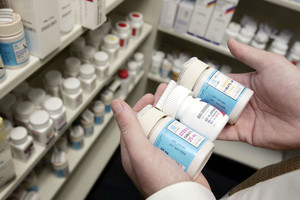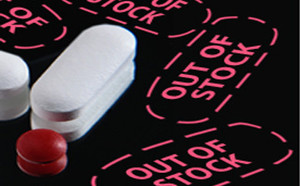The labels for established generics and their originators differ. Especially when it comes to safety messaging, these differences could have a fatal or life-threatening impact on patients, according to researchers from Switzerland [1].
All drug marketing authorization holders have the legal obligation to collect data on the use of the products they market and to keep the label of their drugs updated. For generics makers, their labels are required to be identical to that of their brand-name equivalent [2]. However, previous studies have demonstrated that many generics have labels that differ from their reference originators.
The label plays an essential role in drug safety and risk minimization. It is the main source of information for healthcare professionals and any discrepancies may cause an incorrect message to be disseminated to patients for the same active ingredient.
In order to investigate these potential discrepancies, Alexandra Thoenes and colleagues carried out a comparative observational study of drugs that were approved in the UK and had an international date of birth between August 1945 and August 2004. The study, which was conducted between January and April 2019, investigated the qualitative extent of differences in labels for the same active ingredient, the possible consequences for patients, and the implications for risk minimization.
In the European Union, the reference safety information (RSI) for any medicinal product is the summary of product characteristics (SmPC), which is approved as part of the marketing authorization. In the UK, these SmPCs are publicly available on the Electronic Medicines Compendium (eMC), which contains up-to-date information concerning medicines licensed for use in the UK.
For this study, products from different Anatomical Therapeutic Chemical (ATC) classes were randomly selected from UK’s eMC. Consistency and discrepancies presented in their SmPC were analysed for each safety-relevant section separately as well as across all sections. The percentile distribution of different classifications was calculated. The same method was applied when determining the impact on patients.
Among the 50 drugs initially selected, 31 (covering 13 different ATC classes) were eligible and were analysed further. Of the 31 products, 13 (41.9%) presented critical differences between the labels, 6 (19.4%) had major differences, 7 (22.6%) minor, and 5 (16.1%) very minor differences. Over 60% of the labels [19 (61.3%)] had differences that were considered important (critical or major) by the authors.
In fact, none of the products were fully aligned. A total of 14 of the 31 selected drugs showed discrepancies between originator and generics in the content of the Contraindications section, 20/31 selected drugs in the Warnings and Precautions section, 19/31 in the Undesirable Effects section and 5/31 in the Overdose section of the SmPC. Importantly, there were 10 critical discrepancies in the Contraindications section and 11 crucial discrepancies in the Warnings and Precautions section.
A potentially fatal or life-threatening impact on the patient due to misalignment in labelling was observed in 4 (12.9%) of the labels. A potential severe outcome was noticed in 11 (35.5%) of the labels and a medium impact in 6 (19.35%). A total of 10 (32.25%) labels presented differences that only had a minor or no effect on the patient. In almost half [15 (48.4%)] of the labels, a critical (fatal, life-threatening or severe) potential influence on the patient due to misalignment in labelling was observed.
In addition, for critical label discrepancies, there appeared to be a correlation between the time an originator product had been on the market and an increased number of discrepancies between its label and those of corresponding generics. This, according to the authors, could indicate the absence of constant and systematic comparisons with the SmPCs for other products containing the same active ingredient, allowing inconsistencies between the SmPCs of those products to accumulate over time.
Thoenes et al. concluded that this study demonstrated that in this sample, SmPC alignment between generics and originators is inefficient for established products; and may lead to differing messages being communicated to healthcare professionals and patients. The authors concede that ‘given the drug registration process and regulations in force in Europe, it is likely that this non-alignment of safety information provided on product labels will occur less frequently in the future’. However, they add that ‘in order to address this non-alignment problem, health authorities, such as the European Medicines Agency (EMA) and the US Food and Administration (FDA), must conduct retrospective analyses of all drugs on the market intending to align labels’. The authors suggest that ‘these analyses could be performed during the evaluation of aggregate reports’.
Conflict of interest
The authors of the research paper [1] reported conflict of interest, including being employees of pharmaceutical companies. For full details of the authors’ conflict of interest, see the research paper [1].
Related article
Generic pre-emption: what are the implications
References
1. Thoenes A, Cariolato L, Spierings J, et al. Discrepancies between the labels of originator and generic pharmaceutical products: implications for patient safety. Drugs Real World Outcomes. 2020;7(2):131‐9.
2. GaBI Online - Generics and Biosimilars Initiative. Generics manufacturers do not have to change drug safety labels in the US [www.gabionline.net]. Mol, Belgium: Pro Pharma Communications International; [cited 2020 Jun 26]. Available from: www.gabionline.net/Generics/News/Generics-manufacturers-do-not-have-to-change-drug-safety-labels-in-the-US
Permission granted to reproduce for personal and non-commercial use only. All other reproduction, copy or reprinting of all or part of any ‘Content’ found on this website is strictly prohibited without the prior consent of the publisher. Contact the publisher to obtain permission before redistributing.
Copyright – Unless otherwise stated all contents of this website are © 2020 Pro Pharma Communications International. All Rights Reserved.








 0
0











Post your comment